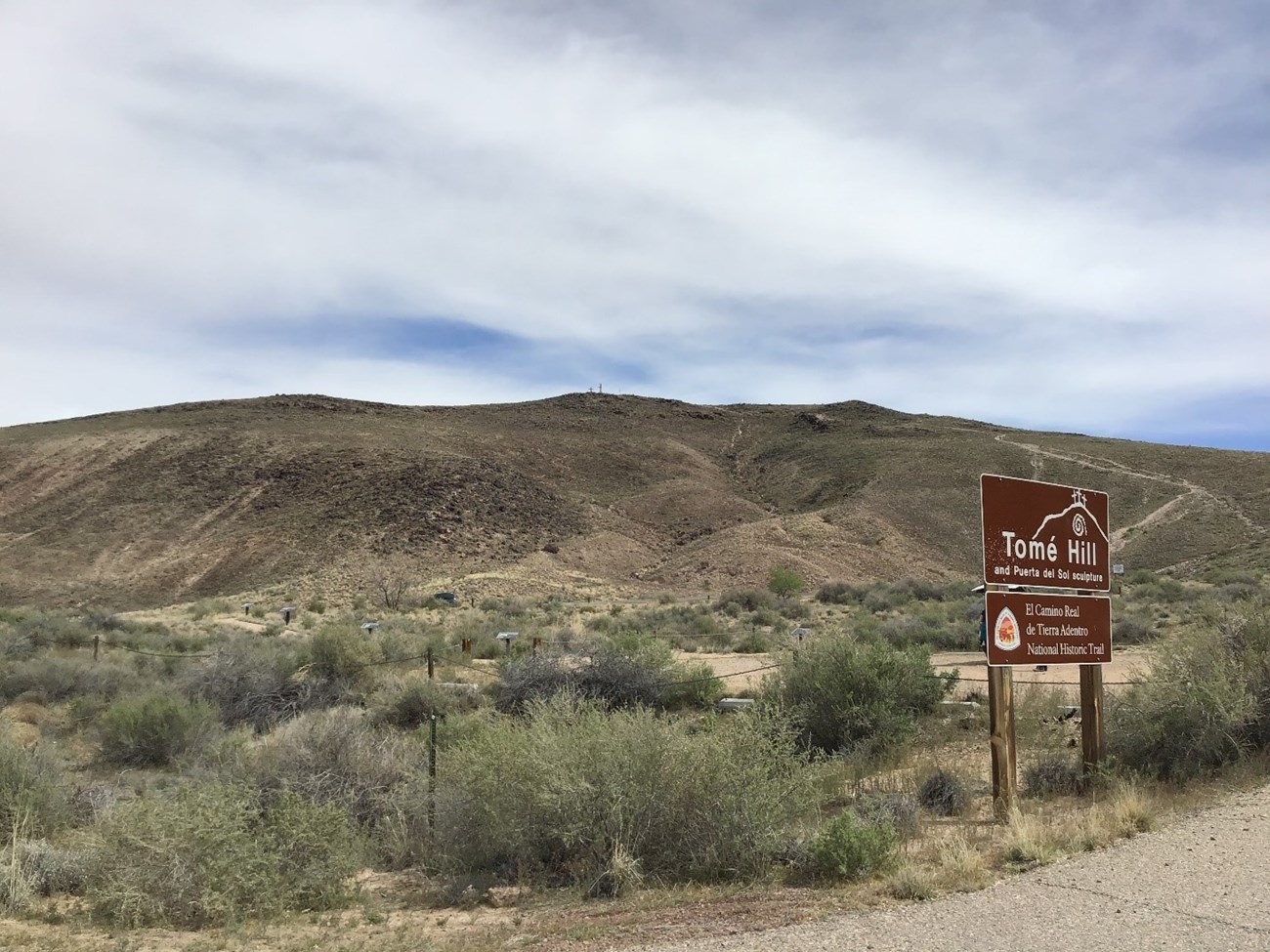Part of a series of articles titled National History Day.
Article
Project Ideas- Communication & National Historic Trails: El Camino Real de Tierra Adentro

This hill is a natural landmark that has served El Camino Real travelers for centuries. It also features pre-historic and historic petroglyphs, telling the stories of the communities who lived in or passed through the area.
Photo/NPS
Communication was an essential aspect of El Camino Real de Tierra Adentro.
Below are a few examples and questions to get you thinking about potential research projects.
1. El Camino Real de Tierra Adentro connected the isolated frontier province of New Mexico with the Spanish (and later Mexican) capital, Mexico City—roughly 1,200 miles away
- How might the trail have served as a communication lifeline between a political capital and its northern frontier?
- What kinds of information might have been carried along the trail?
2. When Puebloan communities rose up against Spanish rule in 1680, the Spaniards retreated southward to El Paso del Norte along El Camino Real de Tierra Adentro
- How did the Puebloan communities planning their rebellion communicate with one another?
- What kind of barriers to communication might have existed between the Spanish and the Pueblos?
- What kind of records exist today? How can we use written communications from both sides of the conflict to better understand the Pueblo Revolt?
- How is this history communicated today?
3. Trail travelers relied upon natural landmarks to guide them along El Camino Real de Tierra Adentro
- How did landmarks serve as visual communication along the trail?
- What can traveling parts of the trail today communicate about the experiences of past travelers?
4. After Mexico won its independence from Spain in 1821, New Mexico was supplied not only by El Camino Real de Tierra Adentro but also by the Santa Fe Trail—a two-way trade route which carried goods, travelers, and information back and forth between Missouri and northern Mexico
- How might Mexico’s independence have changed communication along El Camino Real?
- How might the growth of trade along the Santa Fe Trail have facilitated communication between Mexico and the United States?
Example Project Idea
In the 1600s, drought, heat, and religious conflict increased tensions between Puebloan peoples and Spanish colonizers in New Mexico. The Pueblo Revolt of 1680 showcases how dispersed Puebloan settlements communicated among one another to set a day of uprising against the Spanish. The leader of the revolt, Popé, tied multiple knots into a string; each knot signified one day until the uprising.
---
“With the plans for the rebellion formulated, and with practically all the natives of the entire province ready to obey his demands, Popé now had only to name the day. Acting, as he said, under the orders of the three infernal spirits in the estufa of Taos, he sent out a cord with some knots tied in it to represent the number of days that should intervene before the revolt….The evidence shows conclusively…that the knots indicated the 11th of August as the date for the outbreak of the revolt. The cord was carried from pueblo to pueblo by the swiftest runners, the chiefs of each receiving it and passing it on to those in the next. In this way, the message spread through the whole province as far south as Isleta, only the Piros nation being slighted. The bearers were enjoined to the strictest secrecy and were threatened with death if they revealed to improper persons the significance of the cord.”
Charles W. Hackett, Revolt of the Pueblo Indians of New Mexico and Otermín’s Reconquest, 1680-1682, trans. Charmion Shelby (Albuquerque: University of New Mexico Press, 1942), xxv-xxvi.
---
Suggested primary sources:
• Letter from Don Antonio de Otermín, provincial governor
• Account of Pedro Naranjo, Puebloan prisoner
Suggested digital archive:
• “Documents Concerning the Revolt of the Indians of the Province of New Mexico in 1680”
(compilation of translated primary sources from UC Berkeley’s Cibola Project)
Last updated: August 31, 2020
